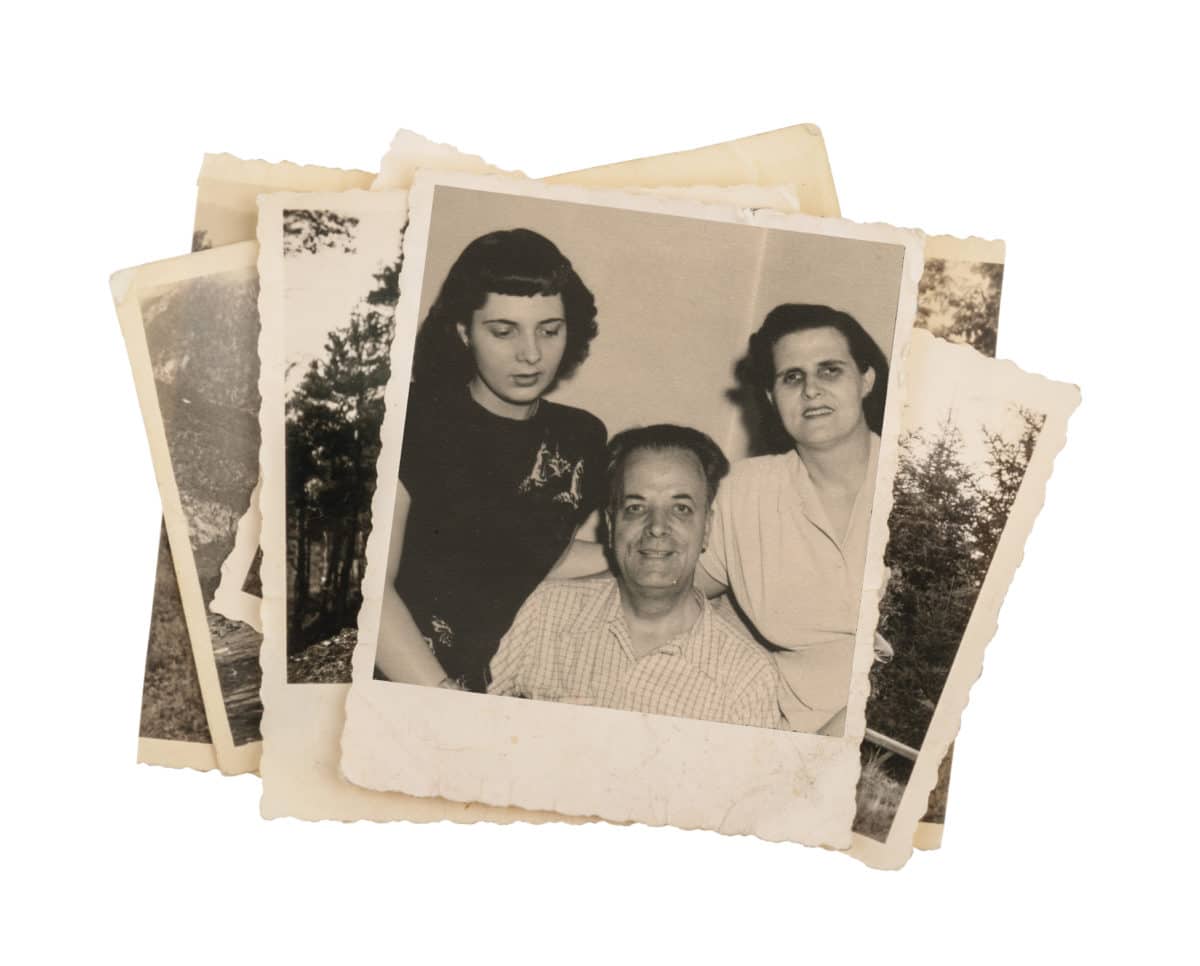I grew up in the 1940s in Toronto, Canada, of Bulgarian parents. Both of my parents were in the clothing business. My mother worked as a seamstress at home, and my father was a tailor in a factory. It was actually a sweatshop that made women’s coats and suits. The work was seasonal for most employees, who worked for six months on the winter clothing and then had six months off, but my father was a sample maker and was fortunate to have work year-round.
Because their life was hard, my parents didn’t want me to go into the clothing business, so I became a teacher. But I married a classical clarinetist and found myself living in Nova Scotia, where by chance I met a member of the symphony board who was in need of a ball gown. I made her a gown and went on to make gowns for other patrons of the symphony. The creation of my own designs led me to the design of knitwear, a career I enjoyed for over thirty years until my recent retirement.
When I was a child, the most special of occasions – Christmas and my dad’s name day – were celebrated in my home with my mother’s homemade baklava. In Bulgaria, a name day is the day — usually in honor of a saint — associated with one’s given name, and is even more important than one’s birthday.
My mother’s baklava was truly made from scratch – she made and rolled her own gossamer-thin dough. On baklava days, as my sisters and I left for school in the morning, my mother would be covering all the furniture in the living room with clean white bed sheets. When we returned at lunchtime each bed sheet would be covered with a large thin pastry sheet.
The filo (also known as phyllo) dough was a yeast-less dough rolled out as thinly as possible with a large clean, unpainted, section of broomstick. After the dough had rested for just long enough – while my sisters and I had returned to school after lunch – my mother cut it into rectangles to fit the baking pan. Between each sheet she sprinkled cinnamon and finely crushed walnuts. When the layers almost filled the pan, she cut them into diamond shapes, brushed the cut edges with oil, and baked the baklava until golden. When it was hot from the oven, she poured chilled sugar syrup across it to saturate it. It was allowed to soak for an hour or two, and was ready, by nightfall, for the family celebration. ![]()
